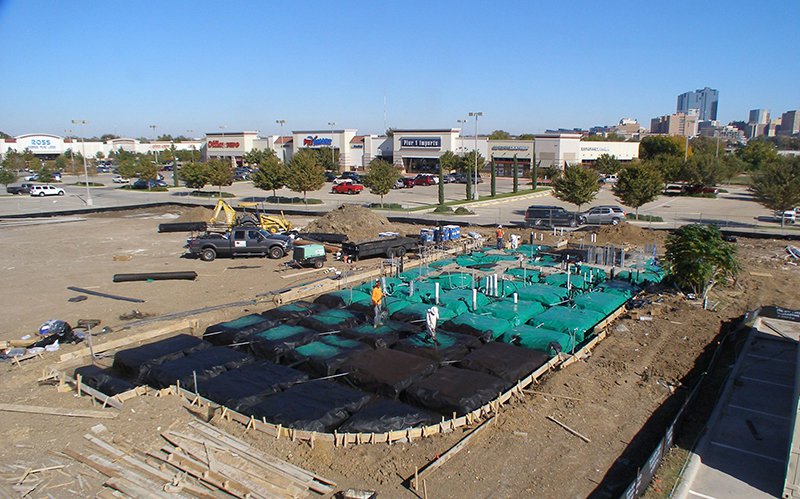Vapor intrusion mitigation protects a structure from vapors produced by subsurface chemical contamination in the ground below.
It shields your occupants’ health.

Vapor intrusion occurs when chemicals in soil or groundwater migrate out of the ground to contaminate indoor air in a structure above. These vapors may include:
Typically, vapors enter a structure by way of its foundation, through cracks from settling, gaps around plumbing and utility lines, or even through the pores of the concrete itself.
Vapor intrusion poses a risk for anyone breathing the contaminated air. Health risks can be immediate or long term depending on the chemicals, the vapor concentration, the amount of ventilation, and how much time people are exposed. In rare cases, vapor buildup from chemicals such as gasoline can create a risk of explosion.
Because of these dangers, vapor intrusion is a significant environmental issue that has become a matter of concern for regulators as well as real estate developers, insurance carriers, building owners, and structure occupants and residents.
CETCO offers a suite of sub-slab vapor intrusion barrier systems comprised of membranes, geomembranes, geotextile reinforcing, protection layers, drainage, and venting components.
| Membranes | Geomembranes | Geotextile reinforcing | Protection layers | Drainage components | Venting components |
LIQUID BOOT Plus LIQUID BOOT LT LIQUID BOOT 500 | VI-20 | BASEFABRIC T-40 and T-60 | ULTRASHIELD G-800 and G-1000 | ULTRADRAIN 6200 | GEOVENT |
With over 50 million square feet of successful installations, CETCO vapor intrusion barrier systems are proven protection from dangerous subsurface chemical vapors for hospitals, schools, libraries, high-rise commercial and residential buildings, multi-family housing developments, and major public works projects worldwide.
Critical elements for successful and long-lasting vapor intrusion mitigation include:
CETCO is the leader and pioneer in cutting-edge environmental products and solutions. Around the globe, our innovative teams of clay mineralogists, chemists, and polymer scientists transform ordinary minerals into extraordinary technology to solve day-to-day problems worldwide.